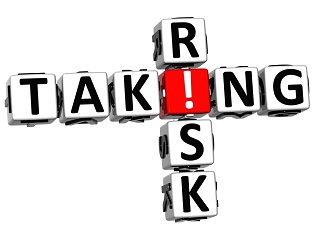Fran
Administrator
AIMs: Identify the methods a firm can use to exploit risk better than its competitors, and explain how an organization can create a culture of prudent risk-taking among its employees. Summarize the basic steps in building a good risk management system. Identify examples of acceptable, desirable, and best practices in corporate risk governance

Questions:
306.1. According to the World Bank's IFC, which of the following methods is the LEAST effective in exploiting risk to gain a competitive advantage?
a. Increase executive pay mix to include more bonus linked to annual profits and more equity stock options
b. Hold more cash on the balance sheet
c. Cultivate an information and speed advantage
d. Hire the right people, including acceptance that good risk takers will not be model employees in stable environments ("People who seem most attuned to risk can be disruptive in more placid times.")
306.2. Which of the following is NOT one of the four basic steps in a building a good risk management system, according to the IFC?
a. Step One: Make an inventory of possible risks (Risk Profile)
b. Step Two: Hire strictly rational risk managers who lack cognitive biases, avoid qualitative- and semi-qualitative estimates, and who will develop a risk program that is independent of the company's size and strategy
c. Step Three: For the risk(s) to be hedged, select appropriate risk-hedging products and decide how to manage and monitor retained risks.
d. Step Four: Determine the risk dimensions that provide an advantage over the competitors and select an organizational structure suitable for risk taking
306.3. According to the IFC, if we assume a company is publicly held and large enough to warrant a Risk Policy Committee (or Risk Committee), then each of the following is a Best Practice in Corporate Risk Governance, EXCEPT which is not?
a. Committee is composed of at least one dozen (12) members and demonstrates a "high degree of ethnic and domain-based diversity"
b. Periodic professional education/training for all Committee members
c. Committee Chair is an independent board member
d. General report on Committee activities included in the firm's annual report
Answers:

Questions:
306.1. According to the World Bank's IFC, which of the following methods is the LEAST effective in exploiting risk to gain a competitive advantage?
a. Increase executive pay mix to include more bonus linked to annual profits and more equity stock options
b. Hold more cash on the balance sheet
c. Cultivate an information and speed advantage
d. Hire the right people, including acceptance that good risk takers will not be model employees in stable environments ("People who seem most attuned to risk can be disruptive in more placid times.")
306.2. Which of the following is NOT one of the four basic steps in a building a good risk management system, according to the IFC?
a. Step One: Make an inventory of possible risks (Risk Profile)
b. Step Two: Hire strictly rational risk managers who lack cognitive biases, avoid qualitative- and semi-qualitative estimates, and who will develop a risk program that is independent of the company's size and strategy
c. Step Three: For the risk(s) to be hedged, select appropriate risk-hedging products and decide how to manage and monitor retained risks.
d. Step Four: Determine the risk dimensions that provide an advantage over the competitors and select an organizational structure suitable for risk taking
306.3. According to the IFC, if we assume a company is publicly held and large enough to warrant a Risk Policy Committee (or Risk Committee), then each of the following is a Best Practice in Corporate Risk Governance, EXCEPT which is not?
a. Committee is composed of at least one dozen (12) members and demonstrates a "high degree of ethnic and domain-based diversity"
b. Periodic professional education/training for all Committee members
c. Committee Chair is an independent board member
d. General report on Committee activities included in the firm's annual report
Answers:
